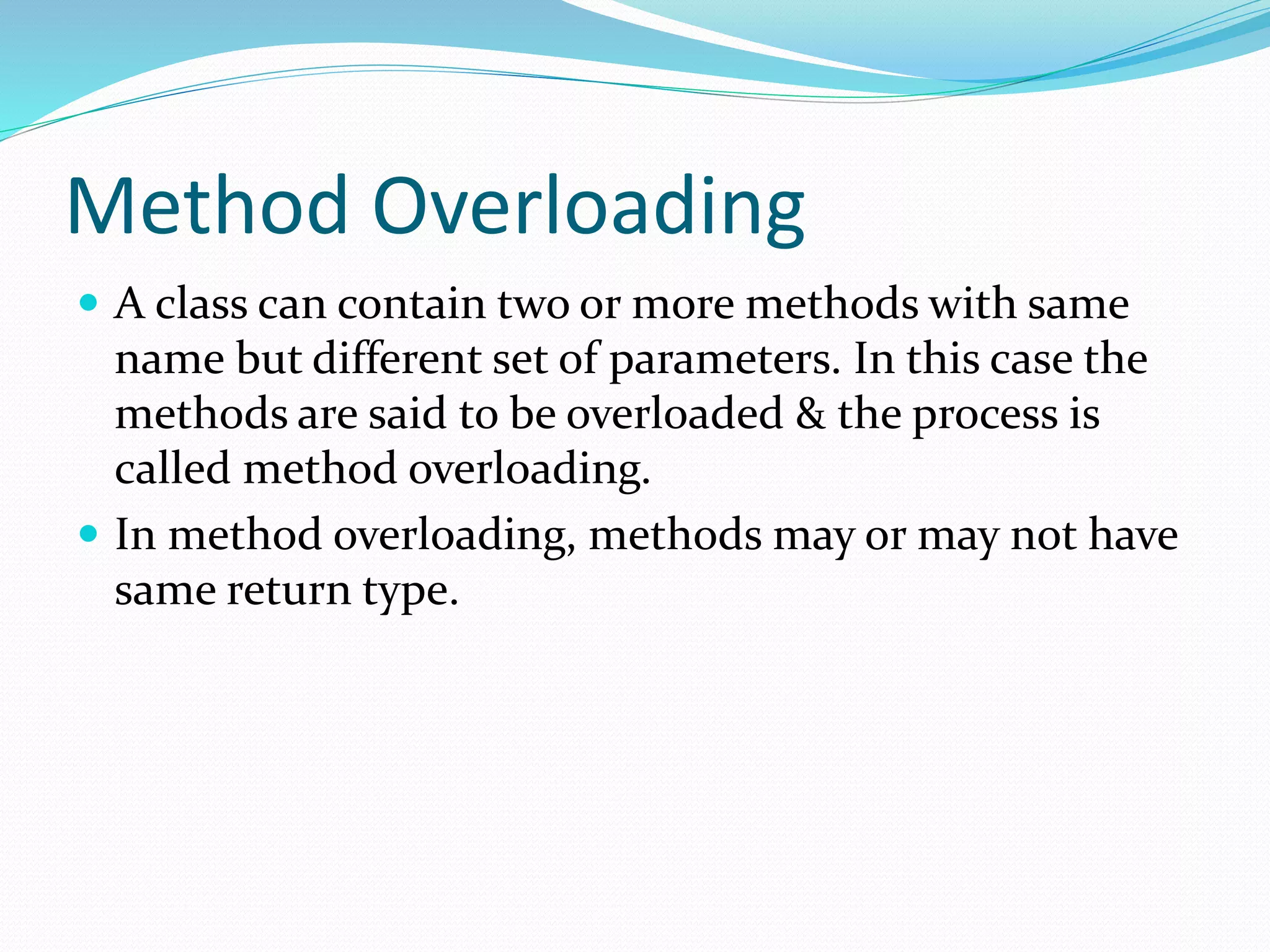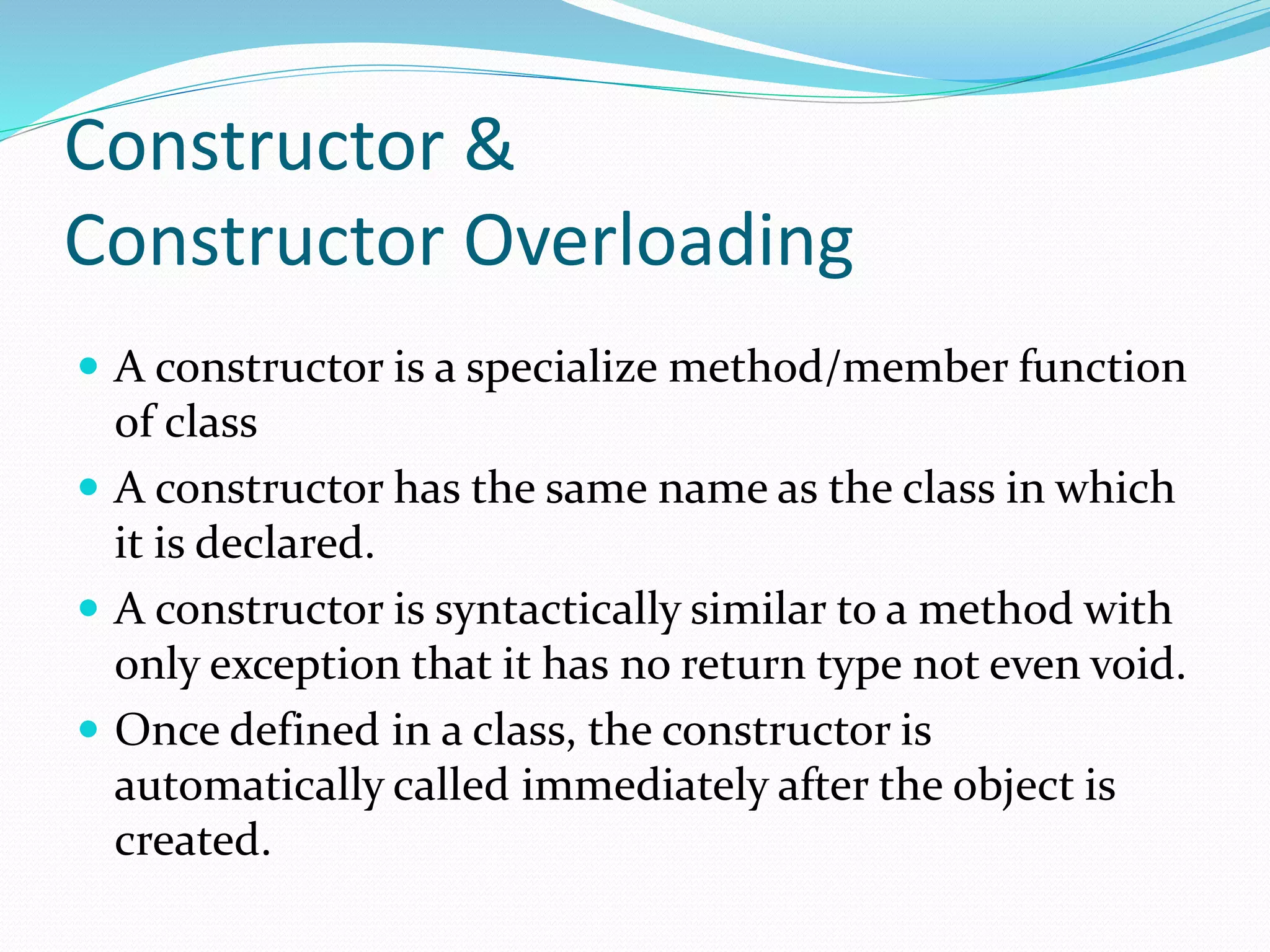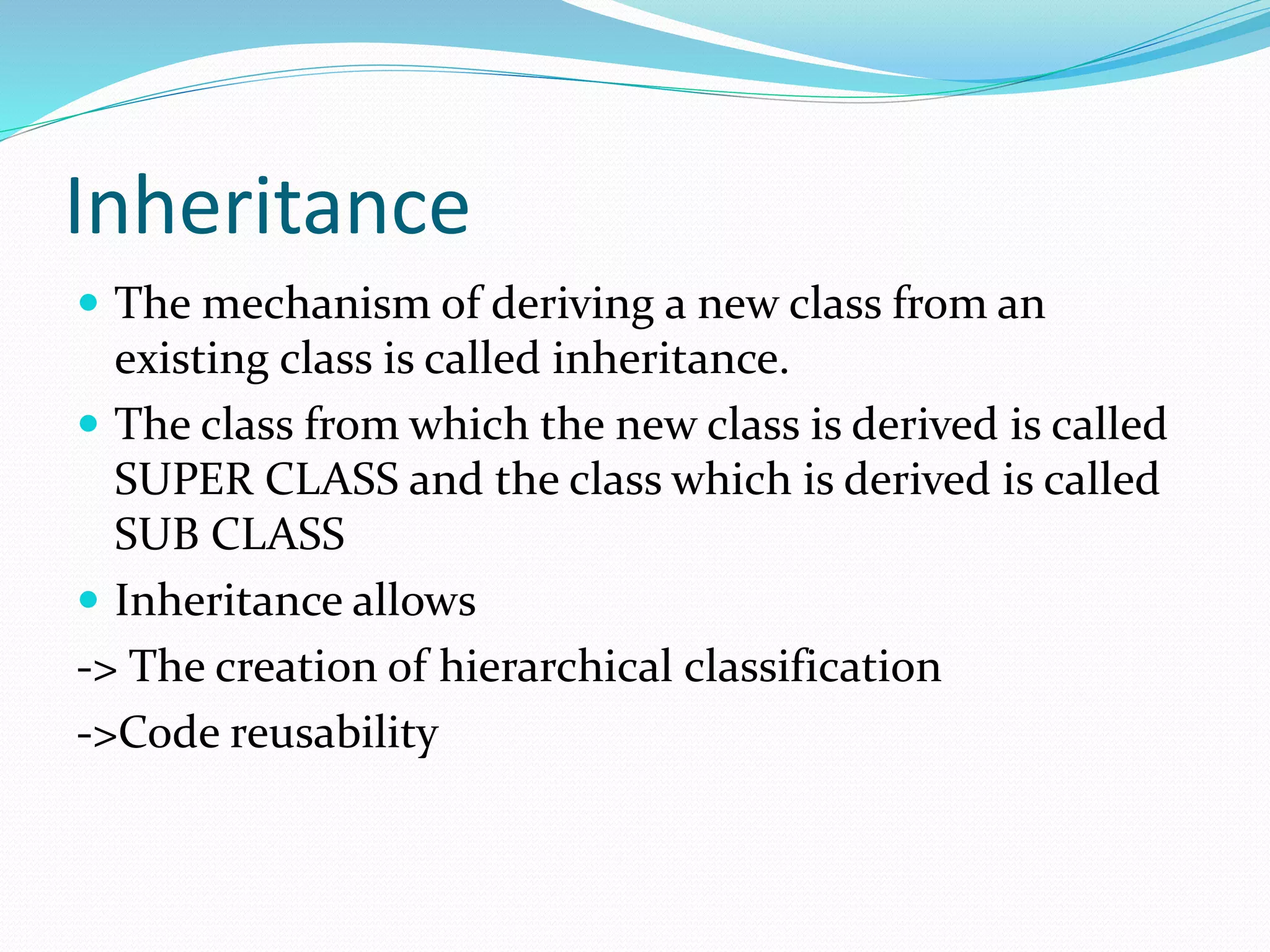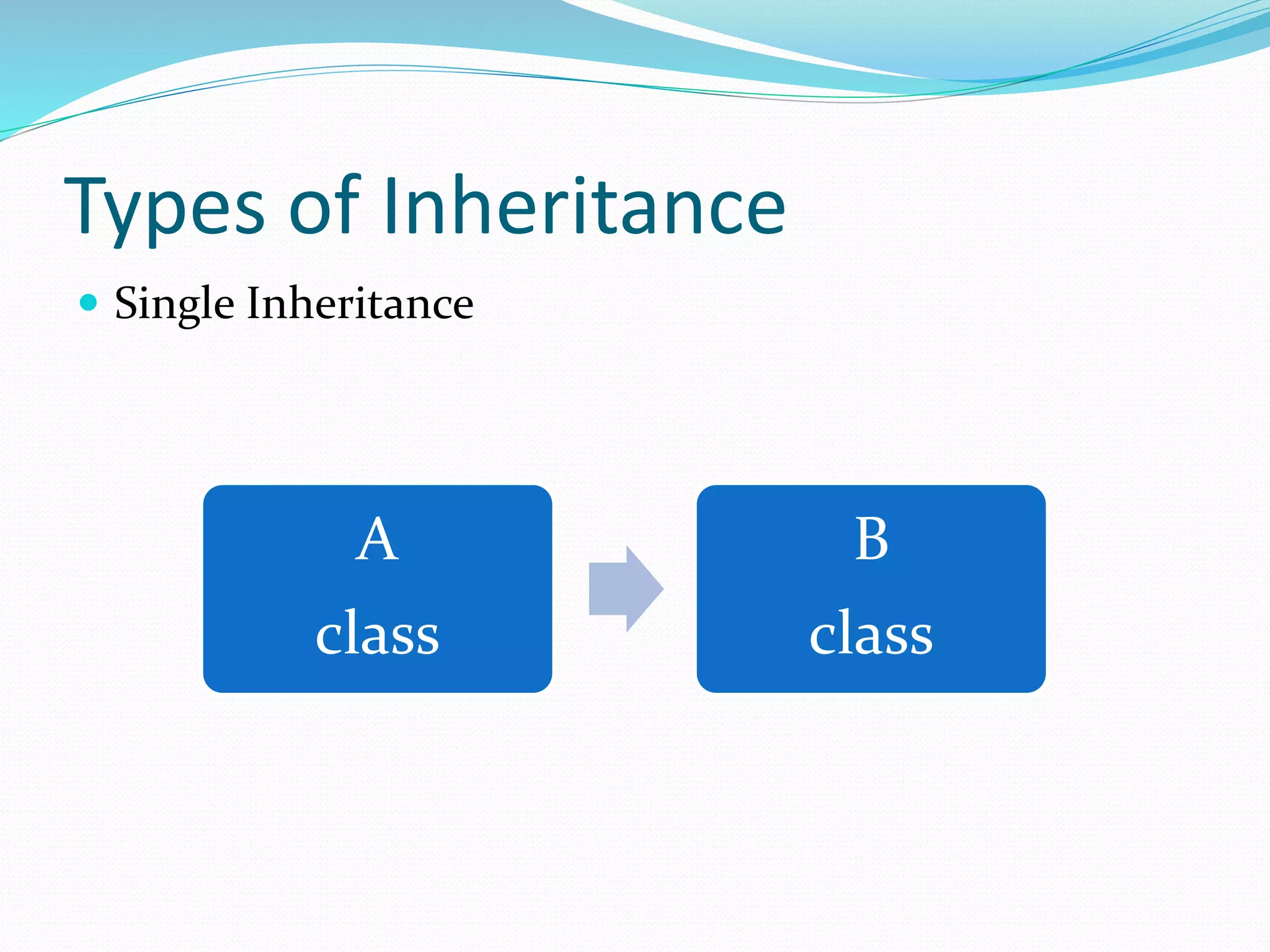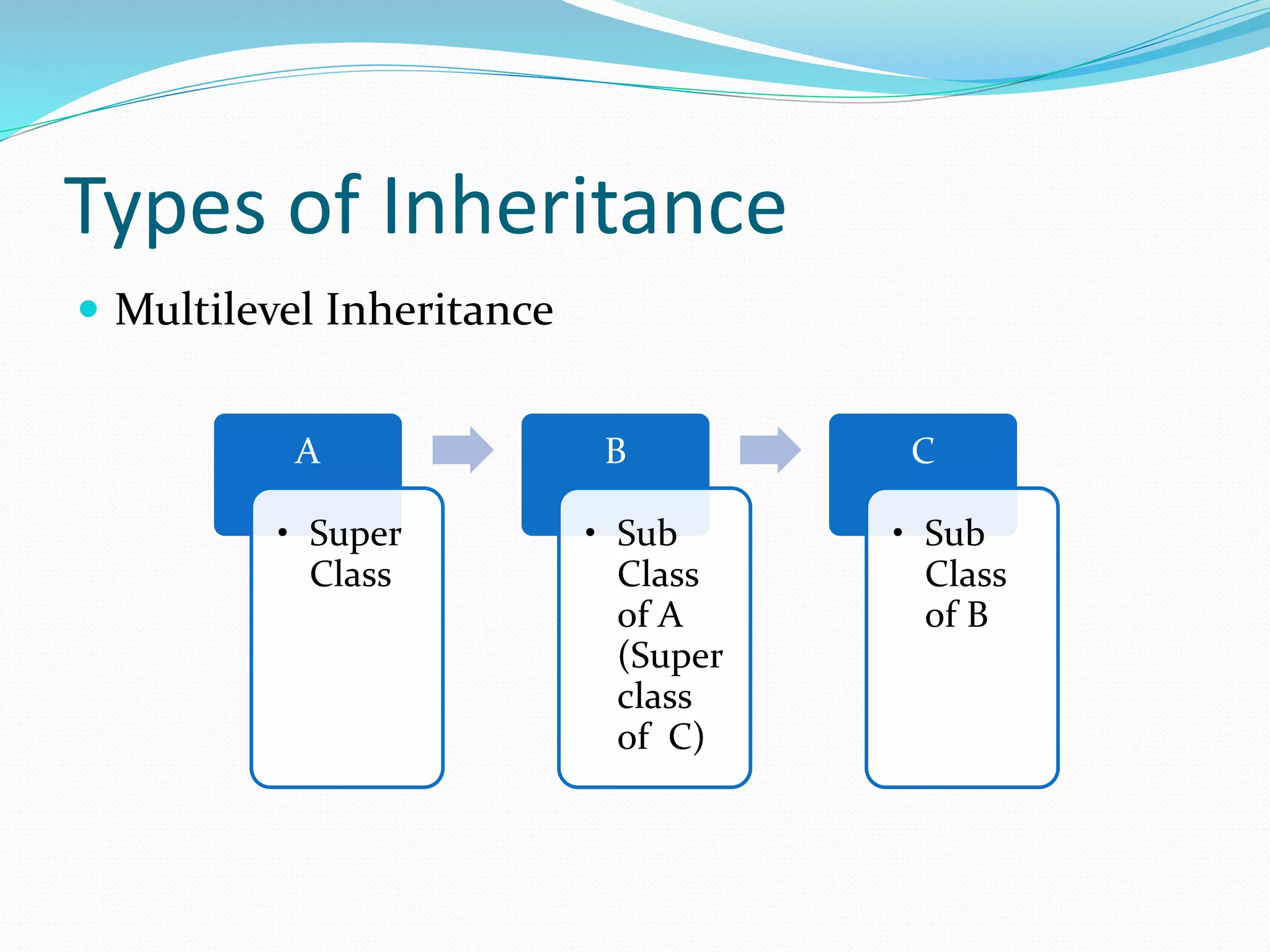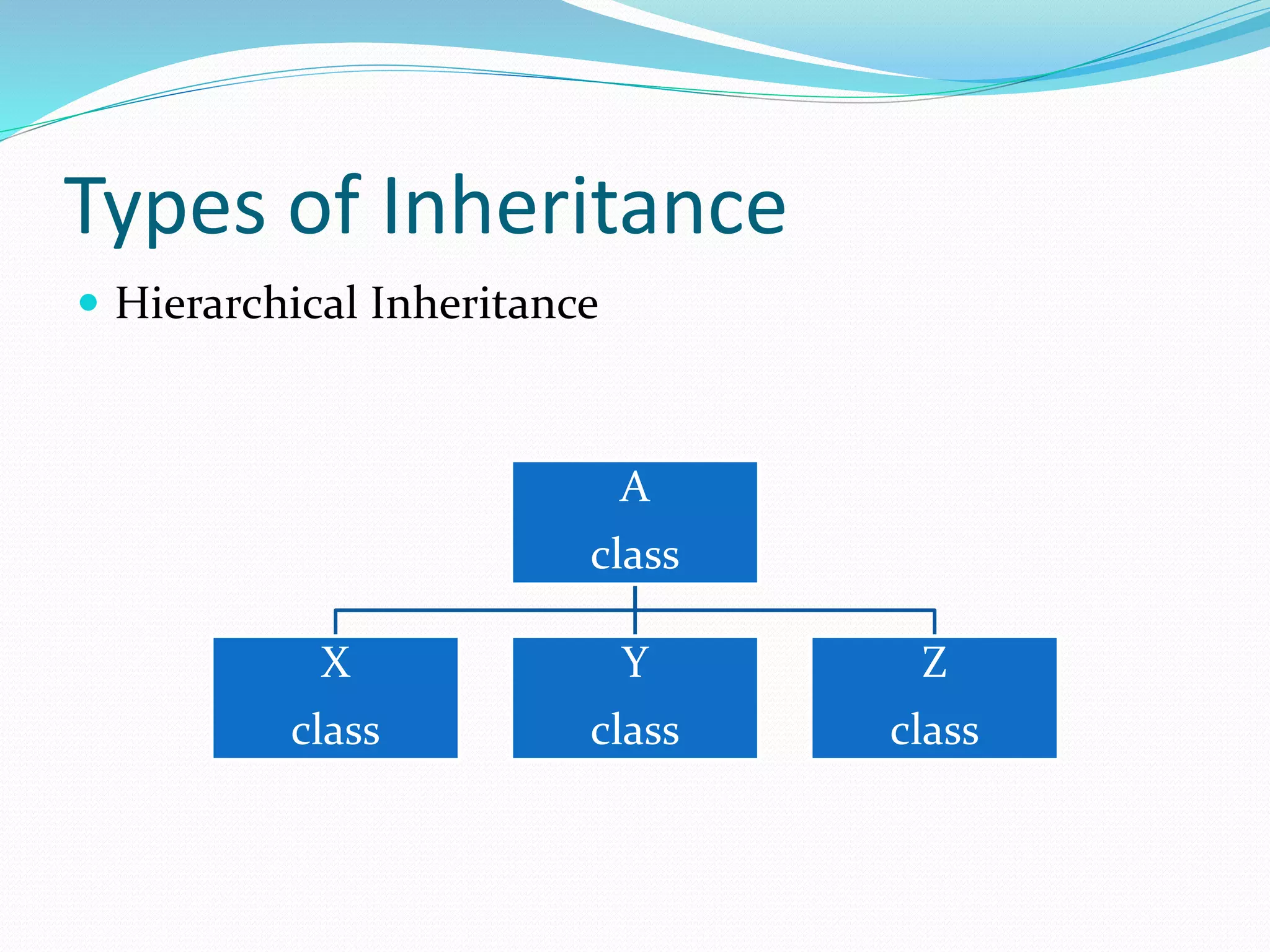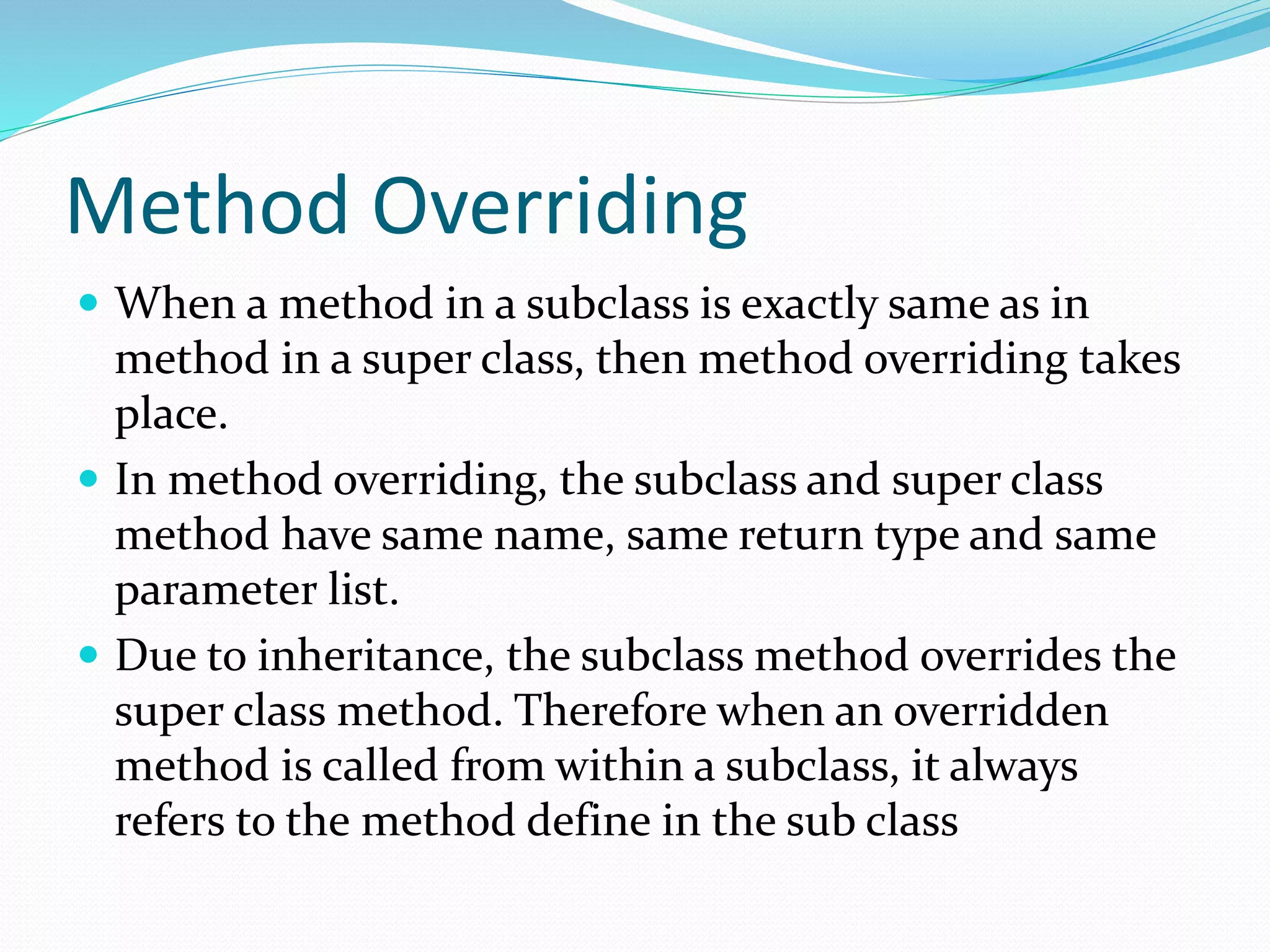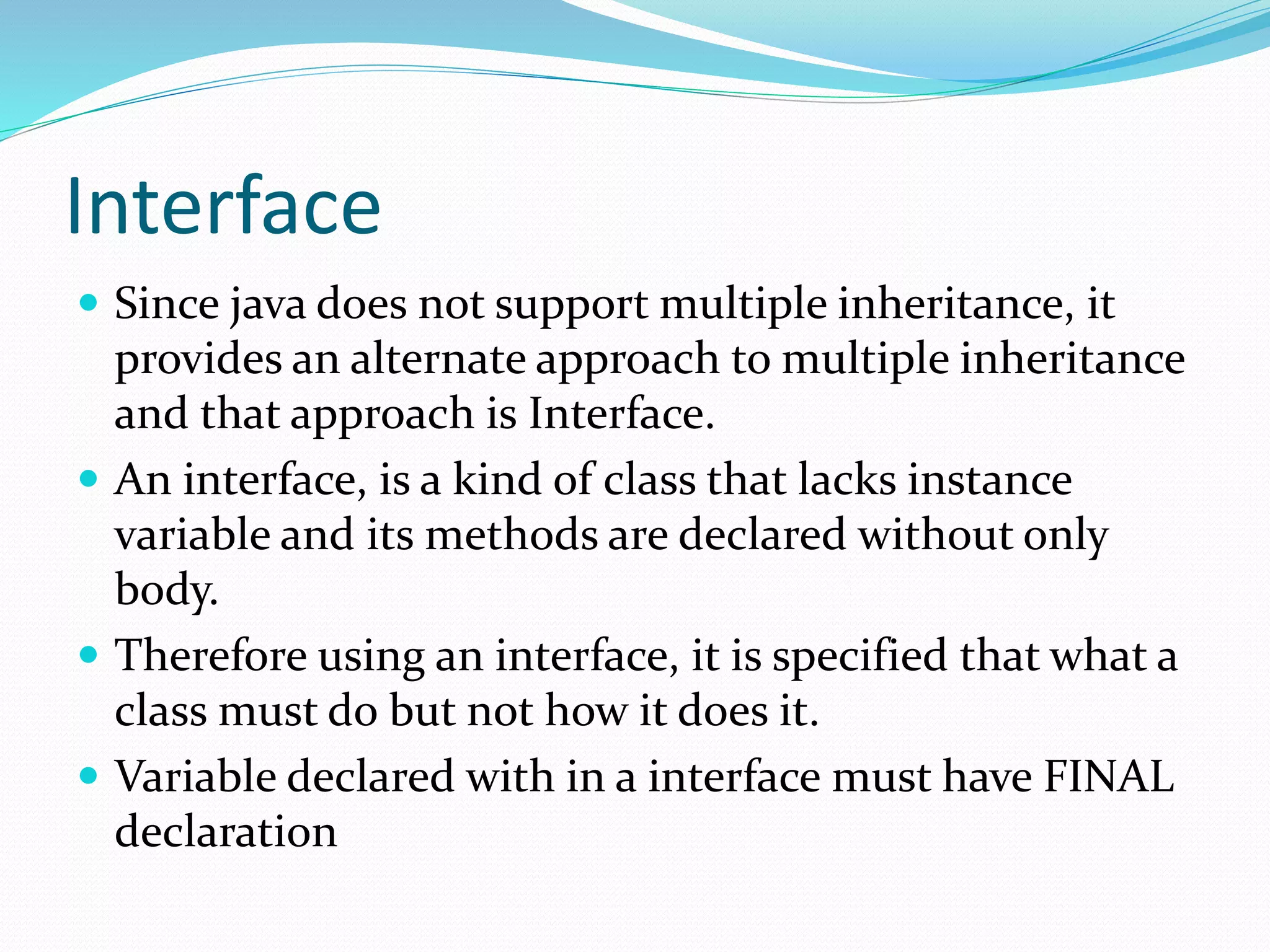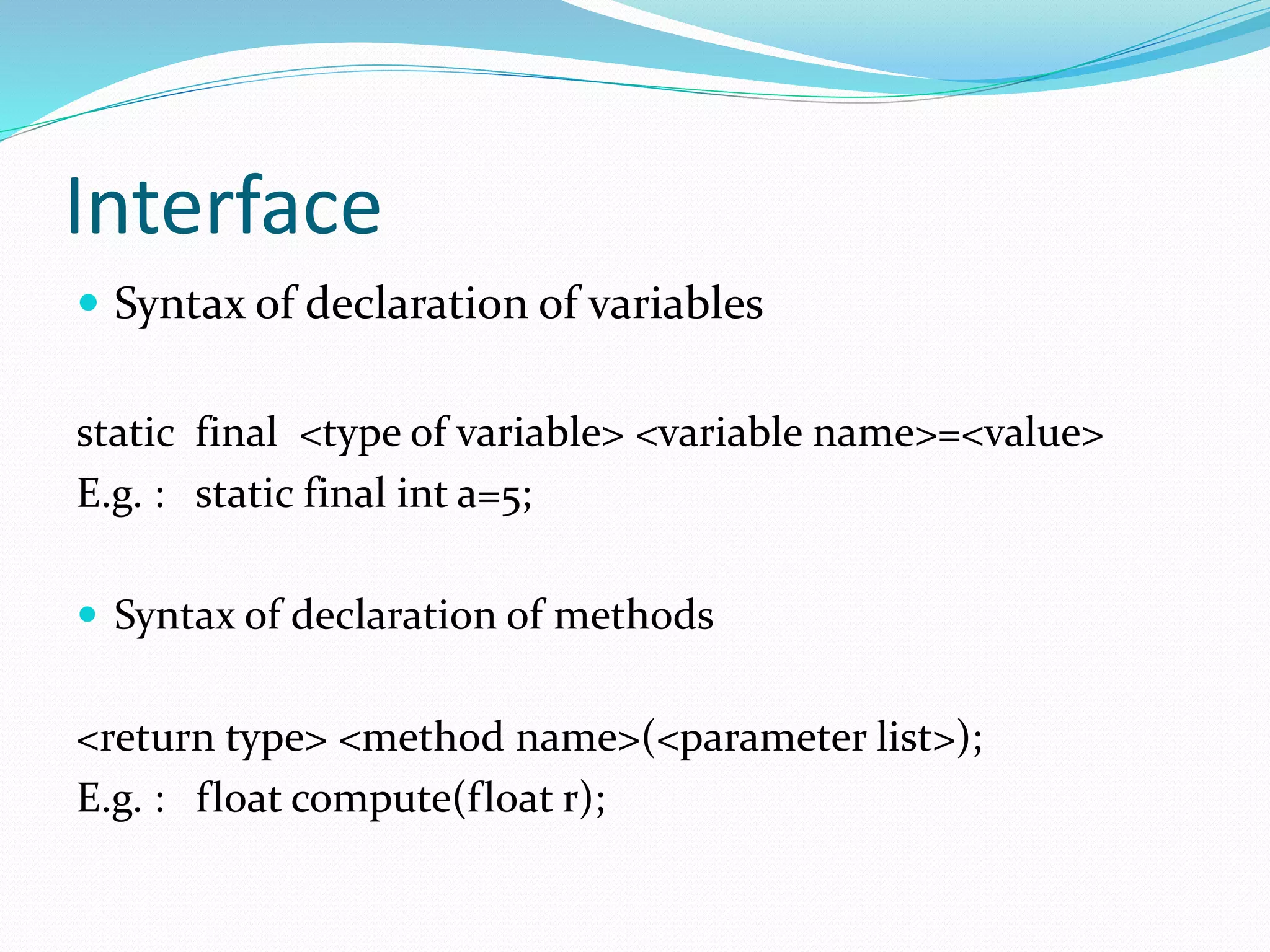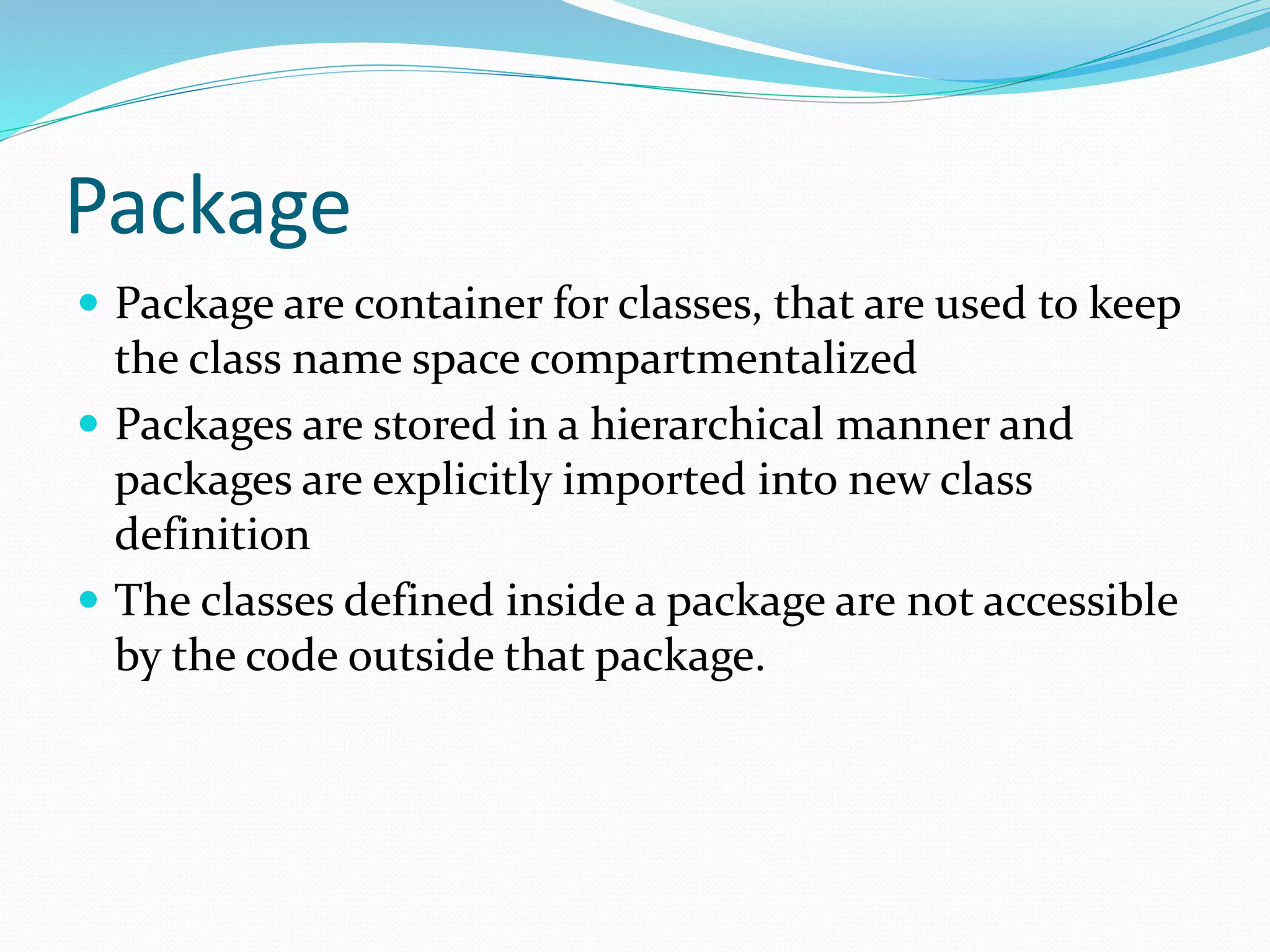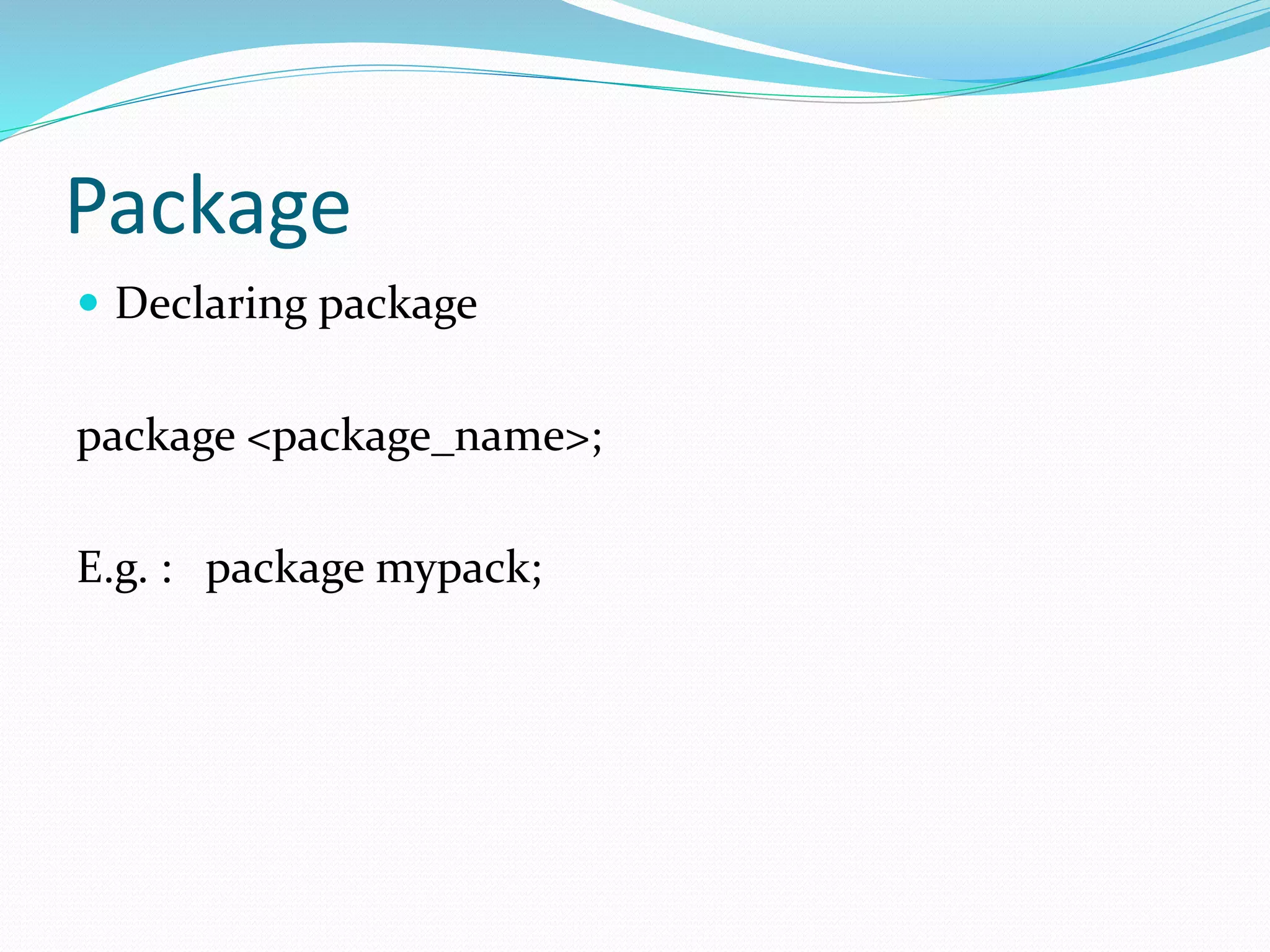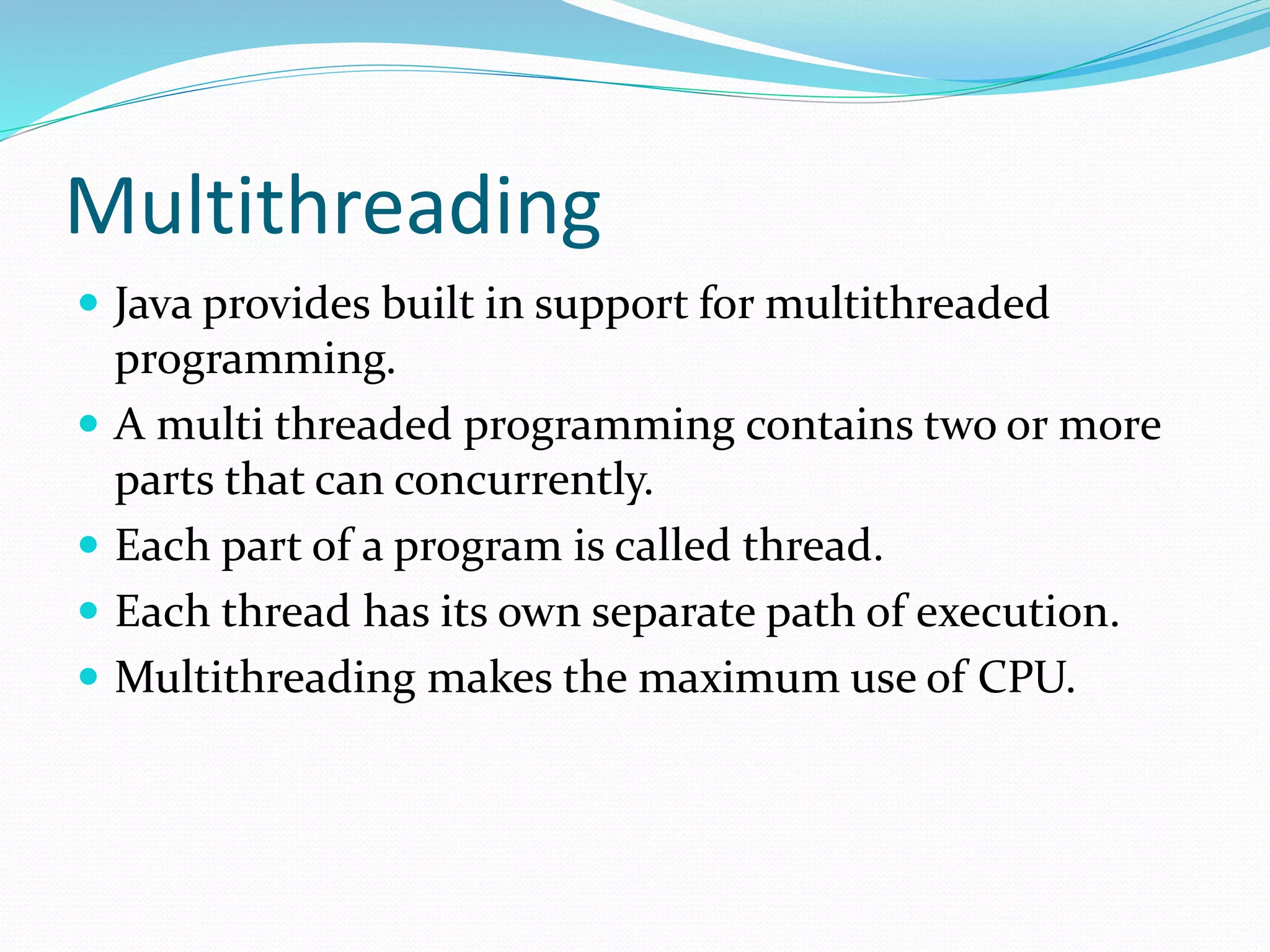The document provides an introduction to the Java programming language. It discusses that Java was originally called Oak and developed by Sun Microsystems in 1991. It can be used to create both applications and applets. The source code is compiled into bytecode, which is then interpreted by the Java Virtual Machine (JVM) to execute programs. Key features of Java include being simple, secure, portable, object-oriented, robust, and multi-threaded. The document also covers concepts such as packages, interfaces, inheritance, method overloading/overriding, and multithreading.
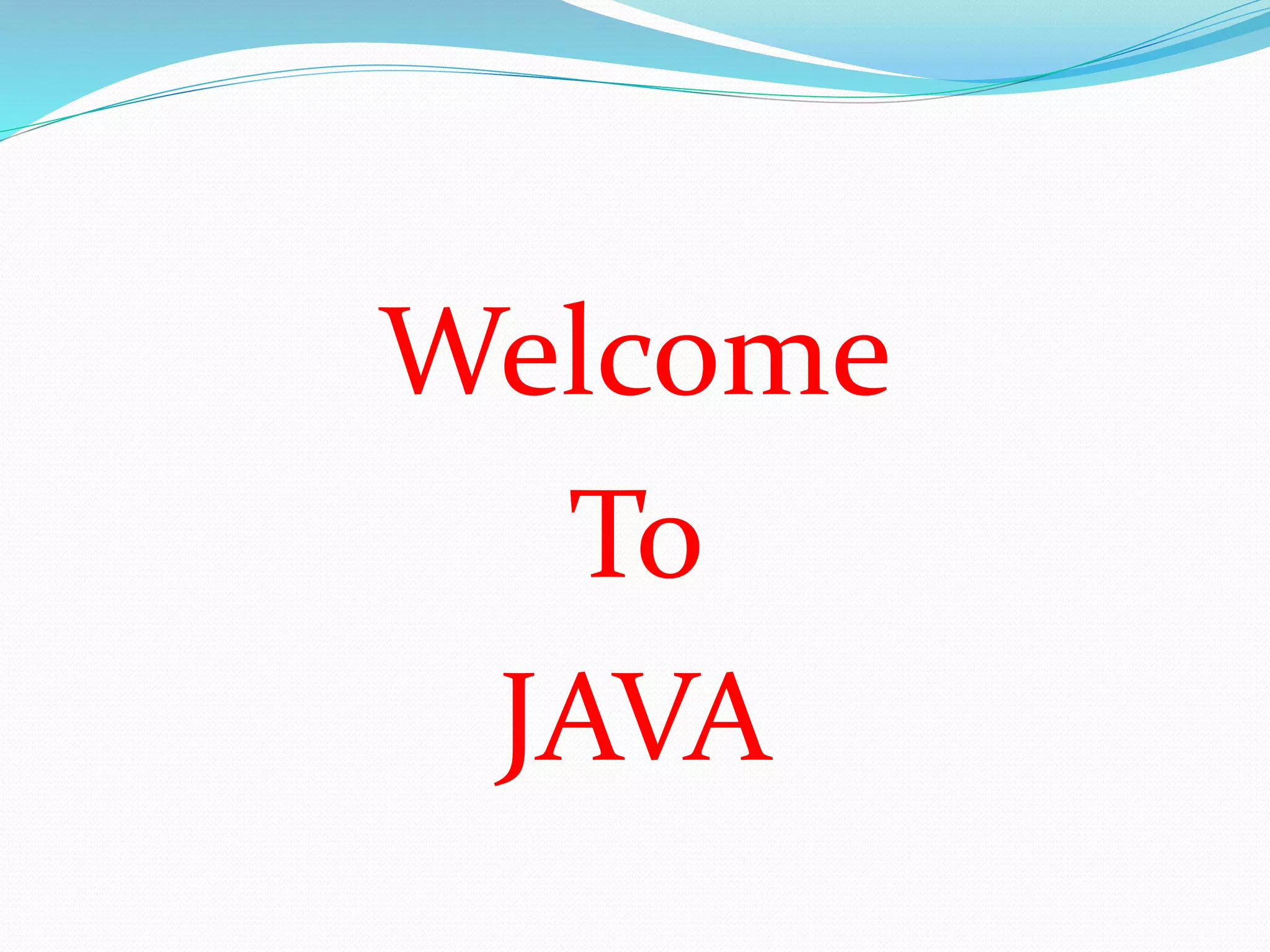
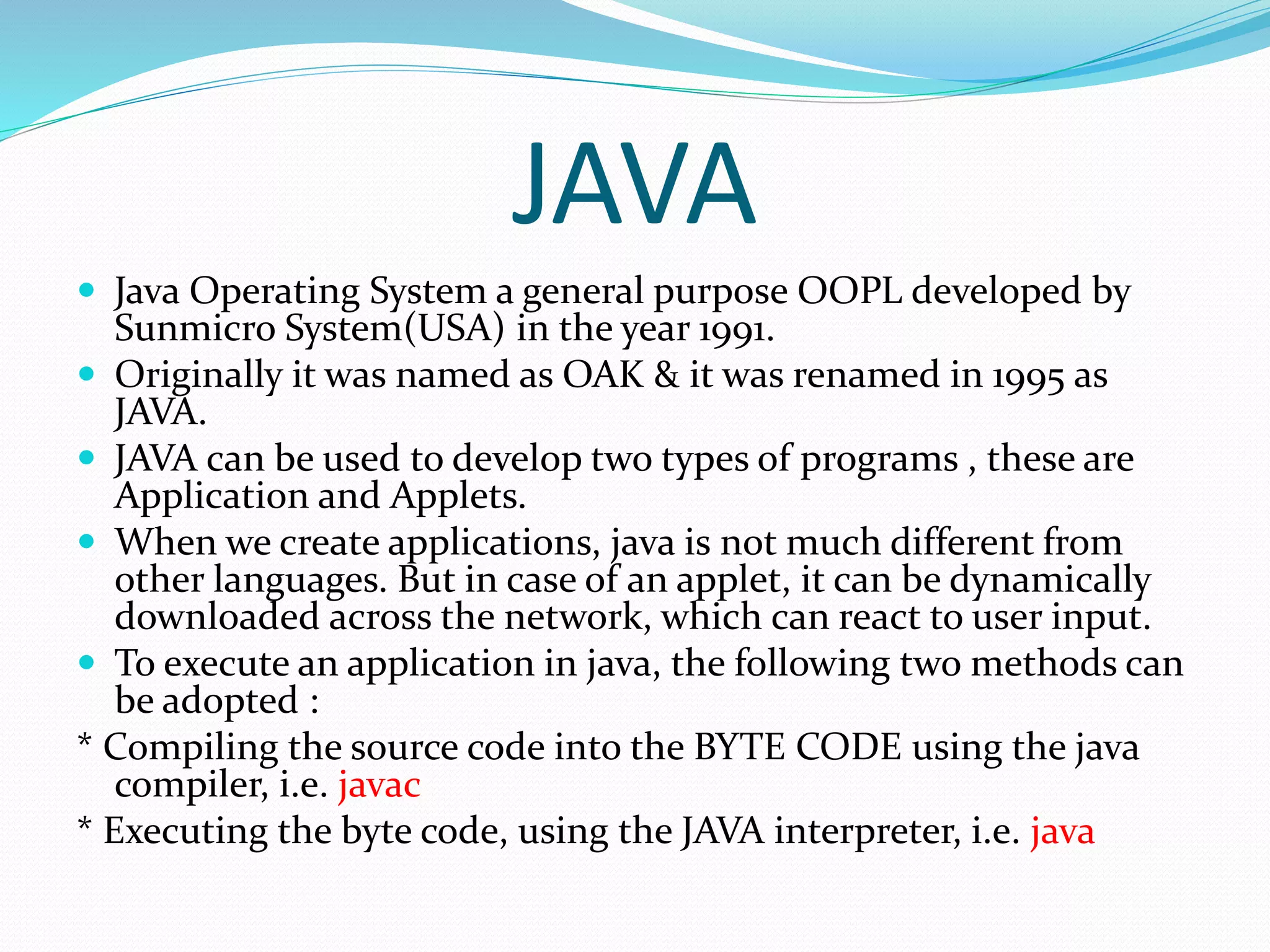
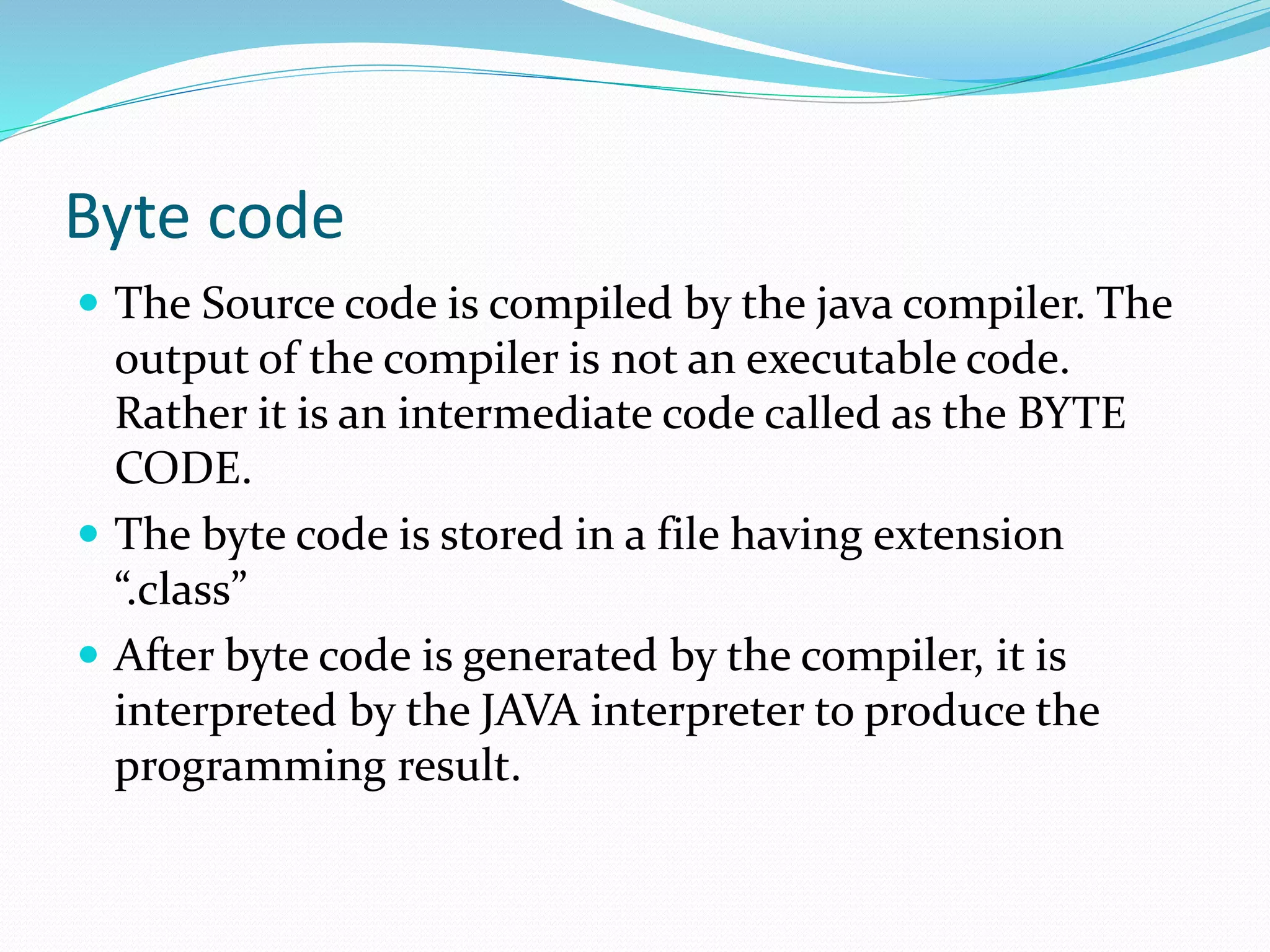
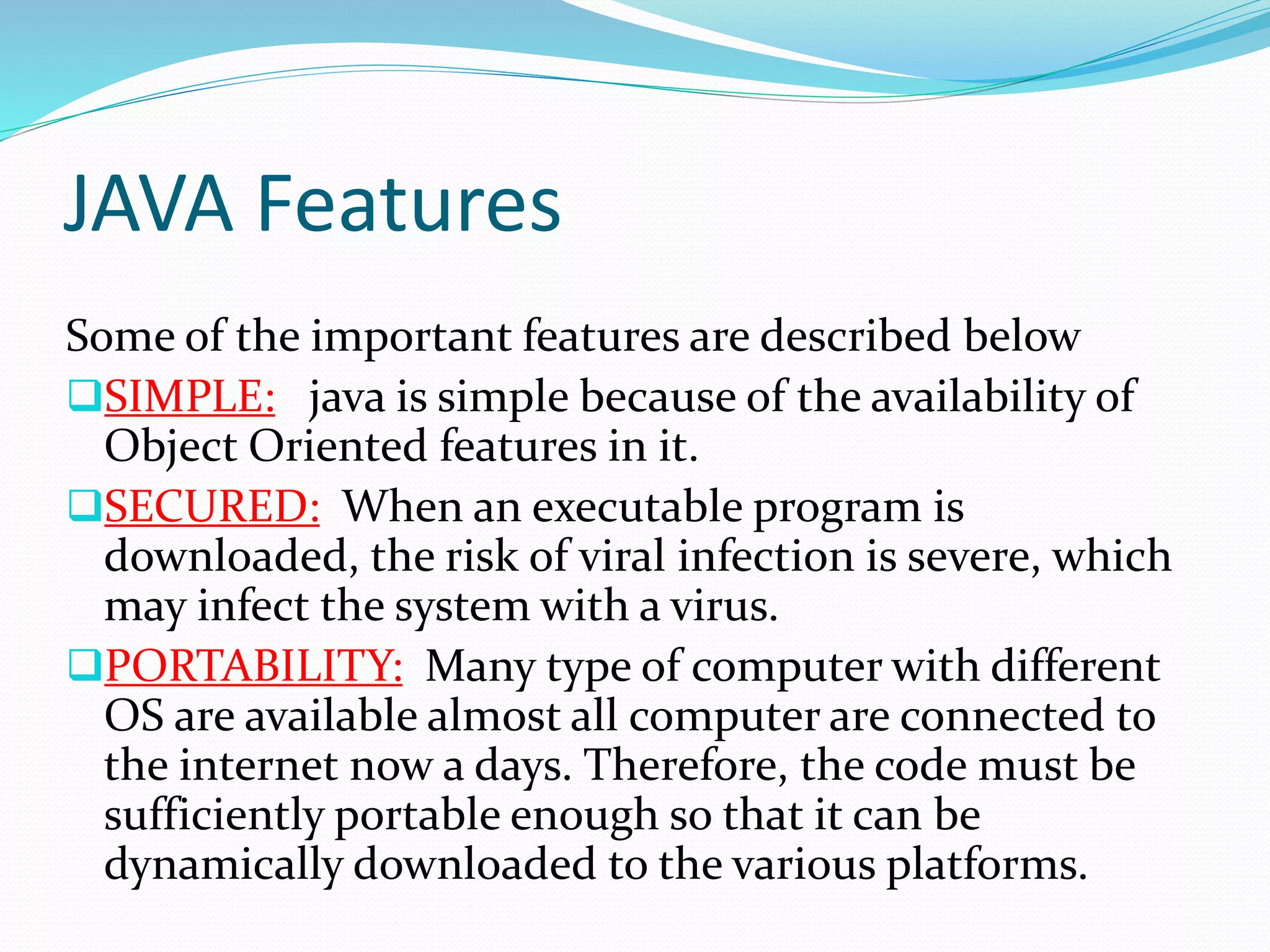
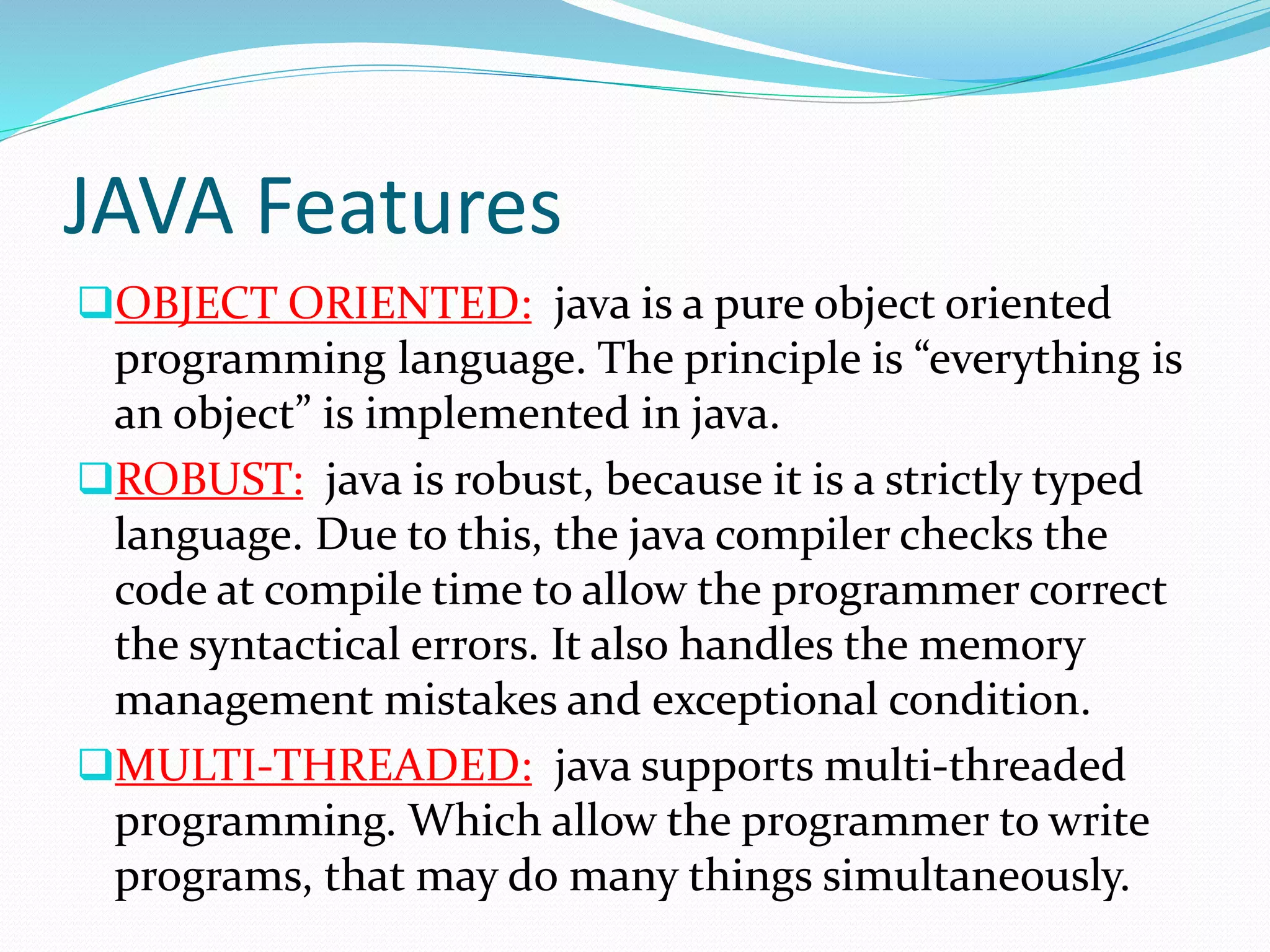
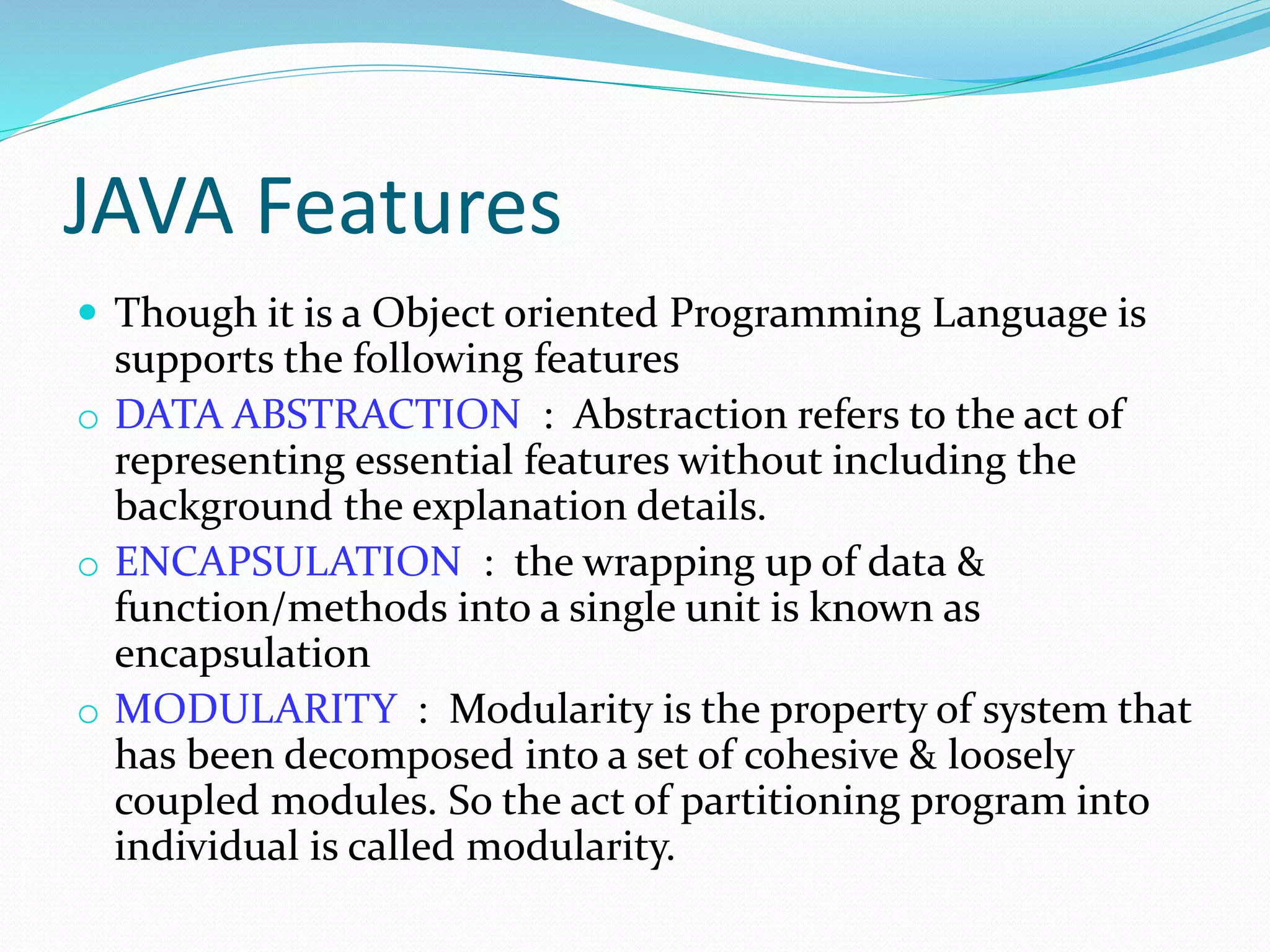

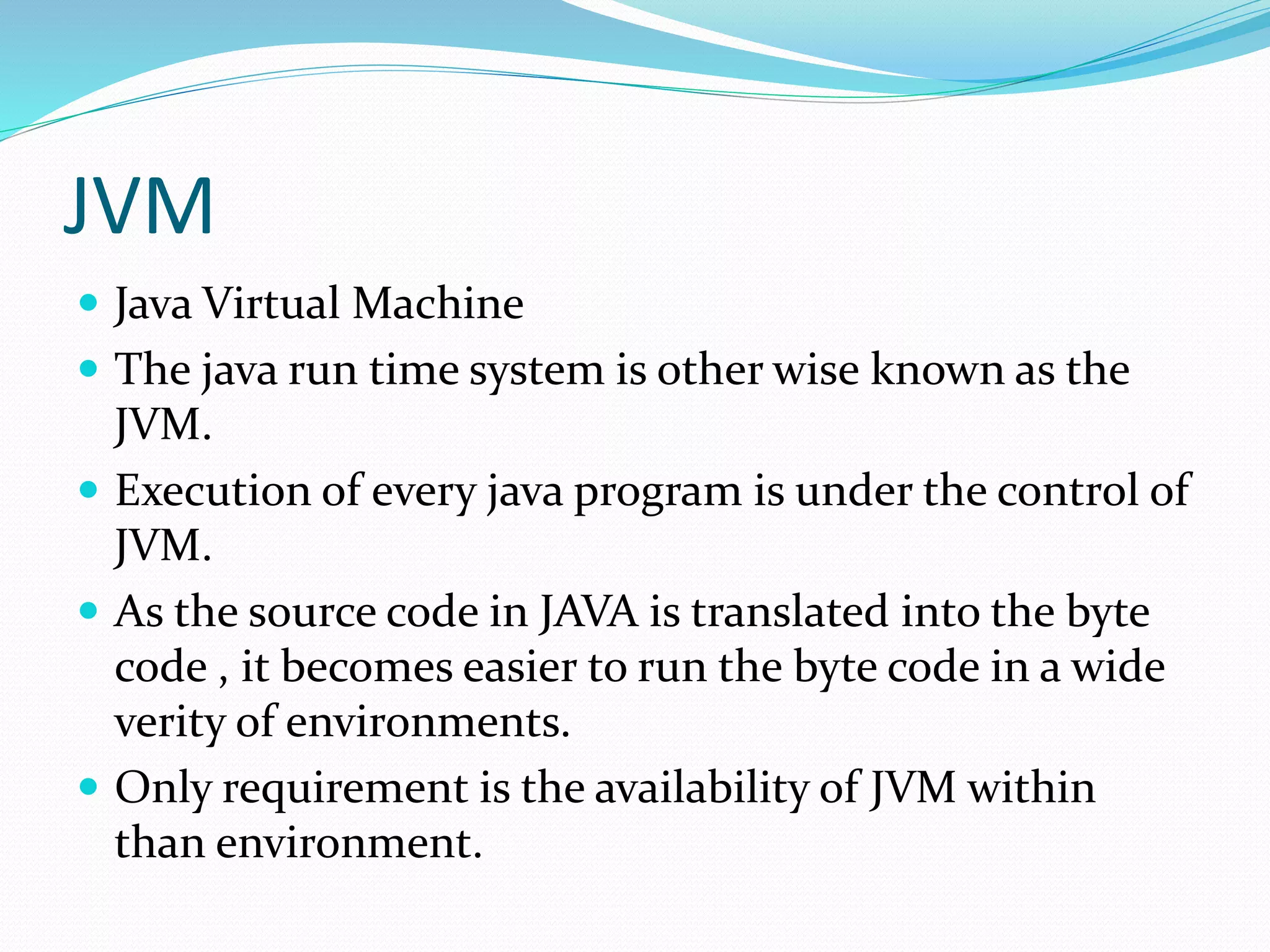

![Command Line Argument
An argument which is supplied/passed to the main()
from the command line at the time of calling the
main() by the java interpreters is called COMMAND
LINE ARGUMENT.
The arguments supplied from the command line are of
string type arguments. Therefore these arguments are
stored in the parameter of main() which is an array of
string objects i.e. args[]](https://image.slidesharecdn.com/java-150126133850-conversion-gate01/75/Java-features-10-2048.jpg)
